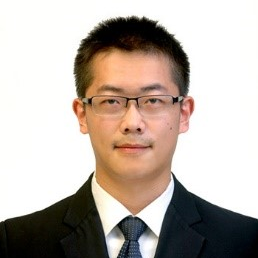Piezoelectric Ultrasonic Actuators and Motors
A special issue of Actuators (ISSN 2076-0825). This special issue belongs to the section "Precision Actuators".
Deadline for manuscript submissions: 25 September 2024 | Viewed by 7605
Special Issue Editors
Interests: piezoelectric actuator; ultrasonic actuators; ultrasonic motors; piezoelectric micro-jet; piezoelectric robotic; piezoelectric printing
Interests: piezoelectric robot; piezoelectric ink-jet; piezoelectric fluid controlling
Special Issues, Collections and Topics in MDPI journals
Special Issue Information
Dear Colleagues,
Piezoelectric ultrasonic actuators and motors constitute a classic field that receives long-lasting interest and concerns due to features such as compact size, fast response, high resolution, easy fabrication, no electromagnetic interference, self-locking, etc. The research interests of ultrasonic motors and actuators have jumped sharply in the last 5–10 years. They have proved to be promising candidates for applications for micro-robots, optics devices, precision manufacturing, and extreme environments (aerospace, deep sea, high-intensity magnetic). However, the wear, heating, fluctuation at low speed, aging characteristic, lifetime, and reliability are challenging for the piezoelectric ultrasonic actuators and motors. This Special Issue aims to provide a forum for the scholars and industry developers to exchange ideas, recent insights, and achieved results related but not limited to the following topics:
• Novel operating principle and design of piezoelectric ultrasonic motors and actuators;
• Multi-DOF ultrasonic motors;
• Modeling and control of ultrasonic motors;
• Applications of ultrasonic motors, especially for special environments;
• Novel methods for reducing wear and improving lifetime.
Prof. Dr. Junkao Liu
Dr. Kai Li
Guest Editors
Manuscript Submission Information
Manuscripts should be submitted online at www.mdpi.com by registering and logging in to this website. Once you are registered, click here to go to the submission form. Manuscripts can be submitted until the deadline. All submissions that pass pre-check are peer-reviewed. Accepted papers will be published continuously in the journal (as soon as accepted) and will be listed together on the special issue website. Research articles, review articles as well as short communications are invited. For planned papers, a title and short abstract (about 100 words) can be sent to the Editorial Office for announcement on this website.
Submitted manuscripts should not have been published previously, nor be under consideration for publication elsewhere (except conference proceedings papers). All manuscripts are thoroughly refereed through a single-blind peer-review process. A guide for authors and other relevant information for submission of manuscripts is available on the Instructions for Authors page. Actuators is an international peer-reviewed open access monthly journal published by MDPI.
Please visit the Instructions for Authors page before submitting a manuscript. The Article Processing Charge (APC) for publication in this open access journal is 2400 CHF (Swiss Francs). Submitted papers should be well formatted and use good English. Authors may use MDPI's English editing service prior to publication or during author revisions.






